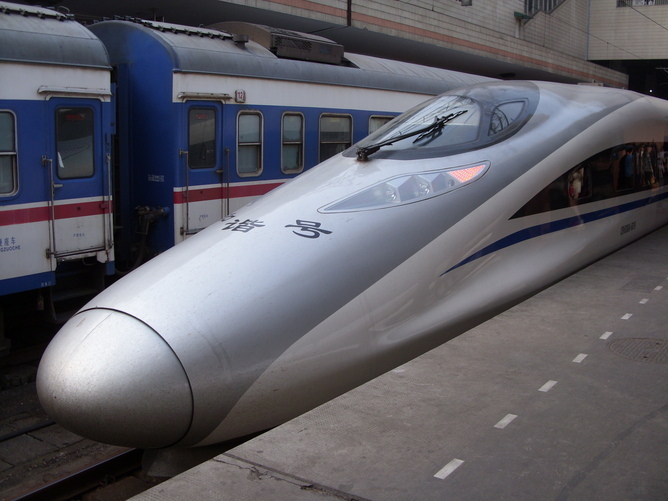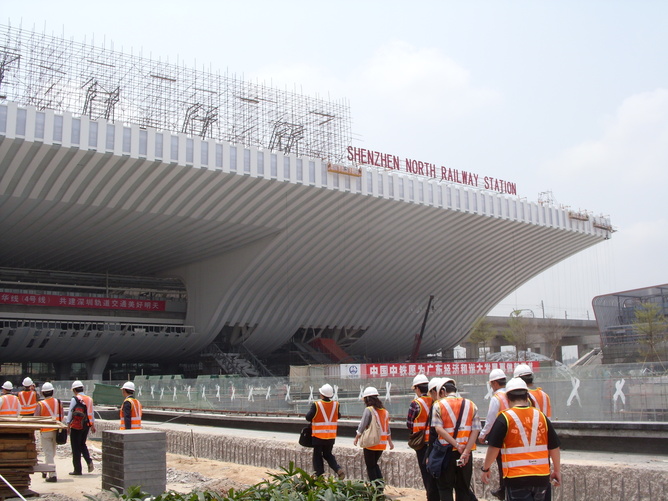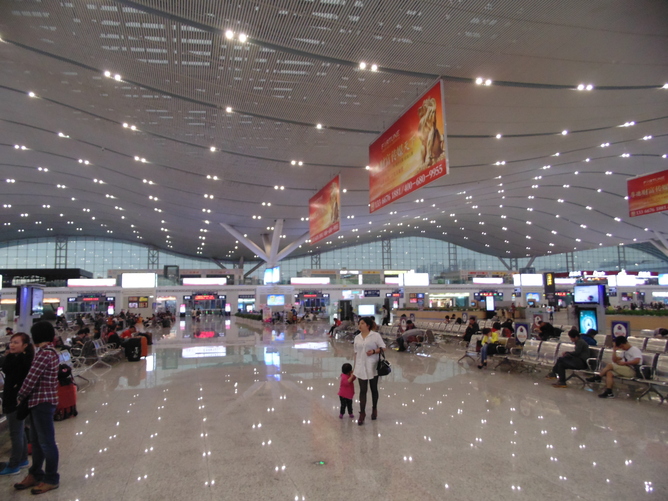With a Bullet: China's High-Speed Rail Dream Begins to take Flight (Op-Ed)


This article was originally published at The Conversation. The publication contributed the article to Live Science's Expert Voices: Op-Ed & Insights.
As a young university student, I first visited Guangzhou during the mid-1990s and found it a gloomy and unsettling place. The third world, undoubtedly.
When I went back again in 2010, it was transformed. The city now had a gleaming new metro system, masses of new buildings had sprung up, and the “old city”, while still full of character, had been substantially tidied up. Here was living proof of the media mantra that “China is changing”.
My trips to China in 2010 and 2011 were largely about gauging the progress of metro rail development and city planning. But what left the greatest impression was the profound power of China’s growing inter-city rail network.
Travelling from my base in Shanghai to cities like Hangzhou and Suzhou, I was swept dramatically along elevated corridors at 360 km per hour.
China’s plan for joined-up rail
China has been pursuing high-speed rail development as a series of hub-and-spoke “clusters” centred on Beijing in the north, Shanghai in the east, and Guangdong province (of which Guangzhou is the capital) in the south.
In Shanghai’s case, this now means the city has rail links to China’s other eastern metropolises: Nanjing, Suzhou and Hangzhou. Previously regarded as separate and distinct cities in their own right, they are now being integrated so that people can work, live and trade on a daily basis between them.
Get the world’s most fascinating discoveries delivered straight to your inbox.
This is urban development on a scale so big that the English language doesn’t even have a word for it. Given that Shanghai is already a “megalopolis” in its own right, what do we call it when Shanghai merges with three more cities of 10 million residents each? Are these huge cities now “suburbs” of Shanghai, despite being the size of Paris or New York?
It’s even more amazing when you consider that the same thing is happening elsewhere in China too. In 2011 I was taken to view the construction of Shenzhen North station, in Guangdong province, not far from Hong Kong.
The builders spoke then of Shenzhen North as the hub of a high-speed rail cluster that would eventually extend throughout Guangdong province as well as to Kowloon in Hong Kong. What’s more, it would also have rail links heading north to Shanghai and eventually all the way to Beijing.
The concept seemed too futuristic to contemplate, but the massive bulk of the Shenzhen North project, and the startling progress seen around Shanghai, rendered it plausible.
Shenzhen North station has now opened, along with similar mega-sized rail terminals in many major Chinese cities. Guangzhou and Shenzhen, 120km apart, are now linked by a 30-minute train ride.
Within just a few years, China’s 2400 km north-south spine will be linked by a giant rail network, with Hong Kong at one end, Beijing at the other, and hundreds of millions of people in between.
A new lifestyle
The Chinese people are getting to grips with high-speed travel as a lifestyle opportunity. Rumour suggests that ticket prices are being kept artificially low, and this seems plausible given that they seem dirt-cheap – the fare from Shenzhen to Guangzhou is equivalent to A$7.
This means that brand-new facilities such as Shenzhen North are already overwhelmed with passenger demand, and my experience would suggest one or two teething troubles. Neglecting to buy a return ticket (as I did on a trip last month) can be a major mistake.
Shenzhen North seems only to have about two dozen operational ticket counters. My 50-minute queue in the wrong line (for ticket pickup, not purchase) was followed by a 30-minute wait to use a ticket machine, which despite having an English-language option barred me for not having a Chinese ID card. Finally, after another hour waiting in another queue, I had my ticket in hand. (Granted, much of this may have been down to being an ignorant foreigner, although my protestations to that effect didn’t really work.)
Ticketing gripes aside, Shenzhen North is a massive and gleaming testament to China’s high-speed rail dream. It is seemingly built to accommodate many hundreds of thousands of passengers at a time, so clearly the immense popularity was anticipated, even if the ticketing system hasn’t quite caught on yet.
The transport revolution
China’s roll-out of high-speed rail is set to usher in one of the most profound changes to travel patterns in human history. For those astonished by the pace of Chinese development over the past two decades, the coming decade will see even faster change, as most of the country becomes integrated through convenient rail travel.
China is not the first to embrace rail. But what Europe and Japan accomplished over 40 years, China has effectively quadrupled in little more than a decade.
What are the implications for Australia and the United States – large countries dominated by cars, trucks and planes, which could benefit from high-speed rail but have so far viewed it as too expensive?
China’s experience could potentially democratise the technology, making it more viable to build high-speed rail links in eastern Australia or across North America.
Perhaps the Chinese rail program will do for fast ground travel what the US space project did for satellite communications.
One thing is for certain - they’ll be selling lots of tickets at Chinese train stations. The queues are testament to that.
Chris Hale is an infrastructure consultant and contractor. His site investigations in Southern China have been supported on an in-kind basis by the MTR Corporation of Hong Kong.
This article was originally published on The Conversation. Read the original article. Follow all of the Expert Voices issues and debates — and become part of the discussion — on Facebook, Twitter and Google +. The views expressed are those of the author and do not necessarily reflect the views of the publisher. This version of the article was originally published on Live Science.




